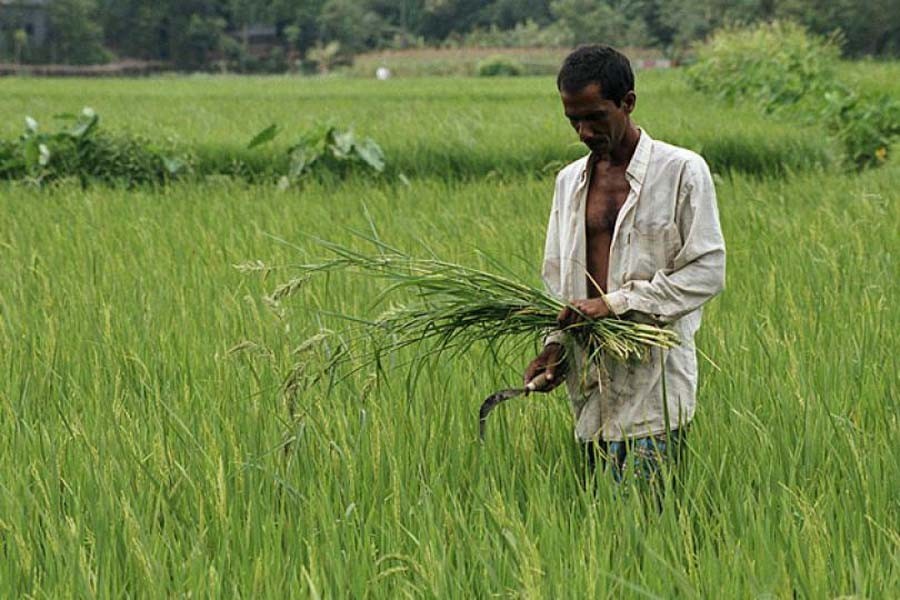At least 69,000 hectares of agricultural land have been shrinking annually due to speedy industrialisation, unplanned urbanisation and increase in rural settlements. Such a situation is pushing the country's food security at risk.
A recent report on the loss of agricultural land indicated a regular and increasingly declining trend in land available for agriculture. Between 1976 and 2000, around 13,412 hectares of agricultural land was lost. In the subsequent period from 2000 to 2010, over 30,000 hectares of land was lost in only 10 years.
However, through the efforts of Bangladesh Rice Research Institute (BRRI) and the Bangladesh Agriculture Research Council (BARC), the country' crop production per unit of land has considerably increased year by year. This has helped to negate the effect of the continuing decline in availability of arable land on food situation of the country. The loss of agricultural land to urbanisation also means an increase in environmental problems, such as air pollution, transportation chaos, loss of critical habitat and green space, and a degradation of water quality.
In fact, urbanisation affects food production in two ways-by removing agricultural land from cultivation, as cities expand, and by reducing the number of family farms, as more farmers move to cities. The spread of cities alone consumes enormous tracts of farmland in much of the world.
As for Bangladesh, long-term outlook appears to be bleak as unplanned growth of population is complicating the process of meeting the demand for food, basic health requirements and educational facilities -- triggering unemployment and social unrest. The prospect is really discouraging as resources are outrunning habitants.
The country's fast growing population is now looking for new land to build homes while entrepreneurs are going to the remote areas of the countryside to set up factories. Agriculture accounts for only 21 per cent of the country's gross domestic product (GDP) although the sector employs around 50 per cent of the nation's workforce.
There will be no cultivable land left in Bangladesh in 50 years if lands are taken away for non-farm purposes at the current annual rate. If the trend is not reversed now, the country would permanently lose its food security, making its poor population more vulnerable to volatile international commodity prices.
In order to reverse this trend, the government has taken some steps including banning use of arable land for purposes other than agriculture. This is no doubt a laudable step. A high-level committee suggested that the factories and educational institutions that have already been built should now go vertical, instead of grabbing more arable land. But the government is failing to monitor how much arable land is being transferred for use other than agricultural purposes as it has no adequate manpower for this purpose.
Such decline in arable land is worrisome. The authorities concerned should go for regular surveys of arable land to present an accurate figure so that necessary steps can be taken to save this land. It is quite a gigantic task, but it should be done at regular intervals with minute attention.


